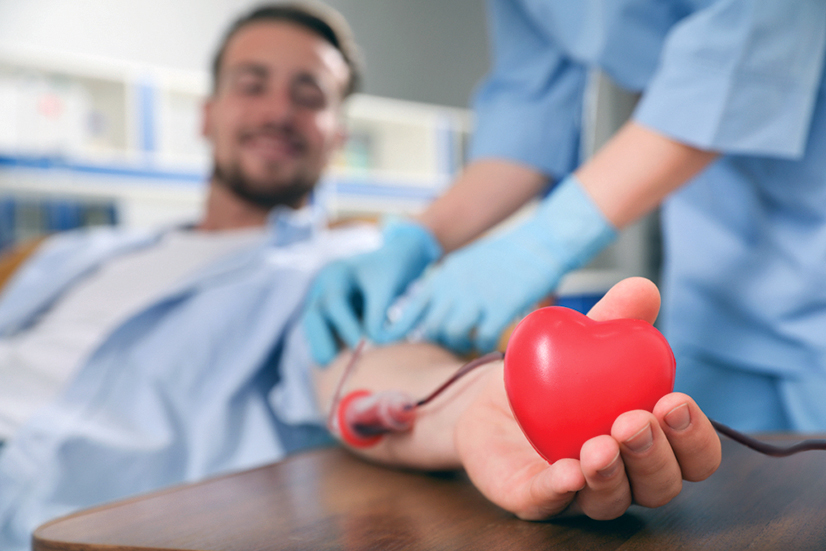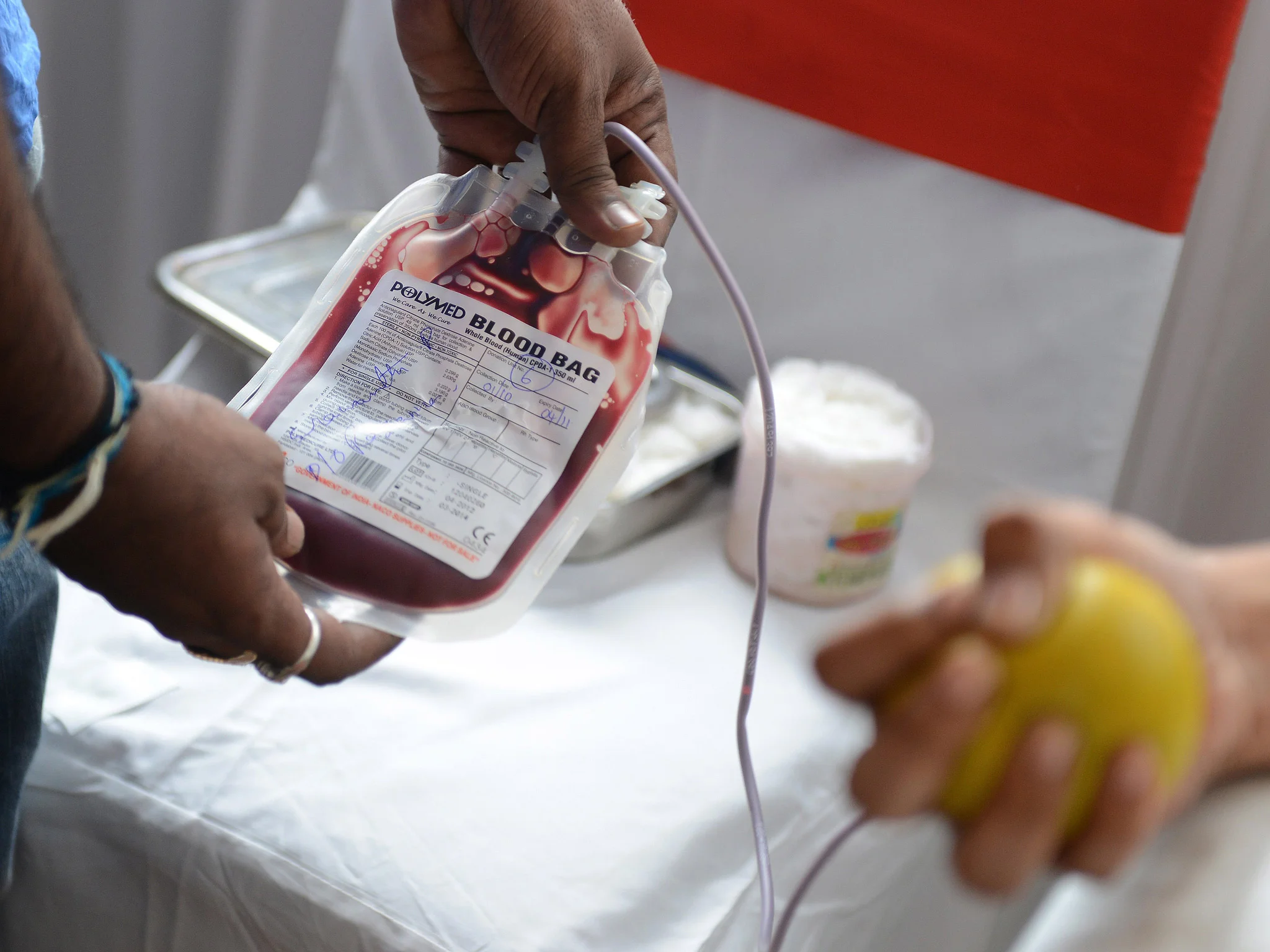By Charalampos Karouzos,
In the realm of healthcare, blood donation stands as a timeless melody, and although today it is perceived as a routine act, its significance in saving lives daily is still fundamental. The act of donating blood transcends the ordinary; it embodies the spirit of giving, offering a gift that extends beyond materialistic bounds. This simple altruistic gesture holds a profound impact for those in need, constructing a beacon of hope and engulfing the true spirit of the winter holidays. It is imperative to delve deeper into the evolution of blood donation, tracing its origins, its contemporary methodologies, and exploring potential future innovations to help potential donors understand the importance of their harmless gift.
Blood transfusions have a captivating history that spans centuries, with the first documented successful human-to-human transfusion taking place in the 17th century, signifying a major breakthrough in medical science. However, early practices were plagued by a limited understanding of blood groups and other components of the transfusion treatment, leading to adverse reactions and often fatal outcomes, thus making a simple transfusion nowadays a very dangerous and lethal procedure. It wasn’t until the early 20th century that Karl Landsteiner made the landmark discovery of blood types, revolutionizing transfusion medicine and laying the groundwork for safer and more effective transfusions. Landsteiner’s work enabled blood banks to categorize and store blood based on compatibility, ensuring that recipients received compatible blood products, which laid the foundation for the establishment of standardized blood donation practices today.
Contemporary blood donation practices, compared to the past, have witnessed remarkable advancements in terms of safety, donor eligibility criteria, and standardized procedures, making them astoundingly safe procedures. Blood donation centers are to adhere to strict protocols to ensure the health and well-being of donors and recipients alike, with rigorous screening processes, including comprehensive medical histories and tests for infectious diseases, conducted to minimize transmission risks. In fact, donated blood is carefully tested for pathogens such as HIV, hepatitis, and syphilis, ensuring a safe supply for transfusion, and should the blood be found positive for any screening agent, the donor is notified, making regular blood donation a free test for the donor.
In addition to safety, automation of blood treatment has drastically revolutionized the collection and processing of blood, enhancing efficiency and accuracy. Modern blood collection techniques, such as apheresis, enable the separation of specific components, for example, platelets or plasma, for targeted therapeutic use, optimizing the utilization of donated blood products. Further, better storage facilities, along with modern software, have created a more efficient and easily accessible blood bank in most storing facilities, like hospitals.
Many would consider that blood donation developments have reached a plateau; however, the future holds tremendous potential for enhancing transfusion medicine and patient care. Ongoing research is focused on utilizing advancements in stem cell technologies to develop artificial blood substitutes, aiming to provide a readily available and universally compatible blood supply, eliminating concerns related to blood type compatibility and scarcity. Artificial blood products have the potential to revolutionize emergency care and provide a stable blood supply during crises or in areas with limited access to donor blood, thus eliminating or better minimizing the need for the human donor as a major constituent in the equation. The potential has sparked interest in the medical sphere as it will reestablish the old direct relationship between donors and recipients, making laboratories the donors of blood based on current needs.

Furthermore, innovative approaches such as gene editing techniques offer future possibilities for modifying blood cells to enhance their therapeutic properties. Genetic modifications may allow for improved storage, extended shelf life, or enhanced compatibility of donated blood. Such advancements can optimize blood products, making a step forward in achieving personalized medicine, improving treatment outcomes, and fulfilling patients’ needs.
Blood donation, while a crucial component of modern healthcare, raises various ethical concerns among religious groups that view the act of donating or receiving blood as a violation of the sanctity of the human body that interferes with divine creation. These concerns often stem from interpretations of religious texts that emphasize the importance of preserving one’s body in its natural state. Furthermore, the future of blood donation in the realm of artificial blood products and gene editing marks an interesting shift that also prompts ethical discussions concerning the implications of replacing natural blood with synthetic alternatives. Ethical considerations come into play when altering the genetic makeup of blood cells, raising questions about informed consent, potential unintended consequences, and the long-term effects of such genetic interventions. Nevertheless, navigating the intersection of blood donation, religious beliefs, and synthetic blood alternatives becomes a complex ethical dilemma that healthcare practitioners must address sensitively, as the ultimate goal must always be to provide the patient with the best possible treatment.
As we navigate the festive season, filled with the spirit of generosity and goodwill, let us consider a gift that surpasses the material and touches the very essence of humanity—the gift of life through blood donation. In present-day healthcare, each donation, devoid of adverse consequences, acts as a stitch that binds us together, forging a legacy of compassion and unity. Let this exploration of blood donations be a simple reminder, calling us into action and urging us to turn moments of celebration into opportunities for life-saving contributions. However, precious gifts must not be limited to the boundaries of the festive season, as a moment of our time to save lives transcends the holiday season.
I also want to mention to the readers that for further information, head to https://bloode.org or search “bloode” on Instagram, where you can find all the information regarding donating blood.
References
- Εθελοντική Αιμοδοσία – Bloode. (2023). Bloode. Available here
- Donation Process Overview. Available here
- History of Blood Transfusions. Available here
-
Blood donation – Mayo Clinic. (2023). Available here




